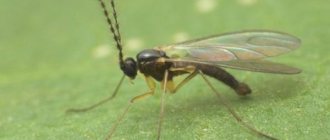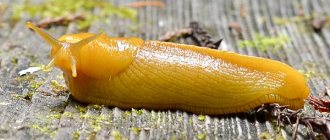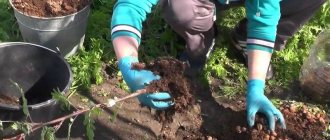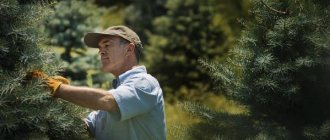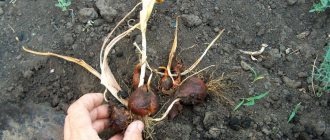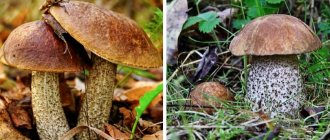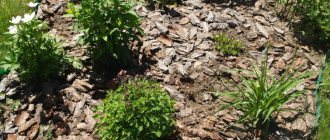Cones on thuja, what to do. Why do cones appear on thuja and whether they need to be removed
Anyone who is at least a little familiar with the principles of constructing garden compositions or is simply fascinated by the beauty and grandeur of coniferous plants will probably give the palm to various types and varieties of thuja.
This is just a lifesaver for a garden designer. It’s impossible to do without it in the landscape business, because it is a vertical accent in the garden, an element of year-round decorativeness, and a fertile material for hedges... Yes, these plants are beautiful, beyond competition. Almost ideal, until at a certain period they become covered with small brown bumps. Is this good or bad? Some people really don’t like the fruits because from a distance they resemble dried out, diseased shoot tips or brown growths. What to do in this case, how to save beauty? Is it really possible to go up to each specimen of this plant with a bucket and pruning shears and cut, cut, cut until they are all cleaned up? Of course, you can do just this if there are only two or three thujas on the site and they are young and quite short. Perhaps this is the best option for such a case. But no one has canceled the laws of nature.
Thuja cones are valued in folk medicine: they are used to make ointments and tinctures that fight many diseases
Cones are seeds; next year they will appear on the plant again. In a year, your thujas will become taller, and it will be harder to jump with pruning shears and a bucket, cutting off the excess.
There is an opinion that thuja produces a lot of cones after a dry summer. Thus, a stressed plant thinks that it is in danger of completely drying out and tries to compensate for this by reproducing. Water your plants more deeply during dry periods.
We can also advise you to kill two birds with one stone: trim the thuja. This way you will get rid of brown cones and form a beautiful crown. After cutting, the thuja will lay more buds and new shoots will grow from them next year. The plant will become more fluffy, “full”, slender and generally the way you want to see it: a cone, a column, a ball, a spiral or just a neat bush. Of course, this will not happen in one year, but after a couple of years of haircuts, you will begin to notice the result.
If you plant thujas in a row by regularly trimming them, you can not only rid them of cones, but also form a dense hedge of a given height.
When forming plants, a number of conditions must be observed.
- Deadlines. Conifers are pruned in the spring before new shoots emerge. In this case, it is advisable to cut last year’s crops by no more than one third. Then you can prune again in late June - early July. The more regularly haircuts are carried out, the more noticeable the result will be. This means that if you trim the plant this year, do not forget to do so next year.
- Use high-quality, well-sharpened garden tools. Small plants can be trimmed with pruning shears in the second or third year after planting. Then you can no longer do without garden shears. Good gardening tools, in my opinion, are produced by the Japanese company ARS.
- Feeding. Don’t forget to feed plants weakened by haircuts. In principle, thujas tolerate crown formation by trimming well. But this event is still stressful to a certain extent. Therefore, do not forget to regularly feed your thujas with special fertilizers for conifers (they can be purchased at any gardening store) and anti-stress drugs, such as Epin-extra or Zircon. Give preference to mineral ones. More magnesium, less nitrogen. From organic sources, vermicompost or rotted compost are suitable. Fertilize in early spring after the snow melts and again in summer. It is better to complete them by August, so as not to provoke the growth of new shoots that will not have time to ripen by winter.
Reproduction of thuja.
I was too lazy to write, but it’s already September and this is the deadline for any action this year.
I’ll immediately paint a picture: I have a little more than 300 thujas of different species “in my care.” But it was the first time I started breeding from scratch.
If you want a good, beautiful thuja, then it’s best to go to the nursery in September and buy a two-year-old one for 200 rubles. Well, or as much as will fit in the trunk. Plant and water. All.
The further text is already a mess for those who are interested in the process itself or who want a lot of things at once.
So, we will talk about the main types of junipers and thujas, which are sold on every corner. Mainly Smaragd and Brabant.
They reproduce in two types:
When propagating by seeds, we lose a year and perhaps instead of a cone-shaped emerald, an ordinary Western European thuja will emerge (yes, I’m shocked).
You can buy seeds, of course, but it’s much more interesting to get them yourself. You can do this by finding a thuja with cones either in a nursery or on the street.
This is how they look to me. If you ask, they will carefully tear off the cones or even a twig for you. It is better to do this in September-October.
Seeds will fall out of the cones, which need to be planted in soil + sand 50/50, or even in pots/boxes. Place in a shaded place and forget until spring.
At the end of spring, these squashes will appear.
The main thing is to protect them from the sun and it’s better, of course, to do automatic watering, but you can do it without it if the sun doesn’t scorch you.
In a year you will have a thuja tall
20cm. Or it won't work. Let's see.
Or you can go straight to option 2, in which you will have a plant in the spring
20-25cm, and by the end of the next year it’s already 40-50.
There are also 2 options here:
A) in August-September, we tear off the cuttings and plant them in sandy soil (after dipping them in a root growth stimulator). Cover the top with a bottle and occasionally pour it through the neck. It is better if the cutting comes with a piece of bark.
B) in the fall we wrap the cuttings in moss, keep them on the balcony, and germinate them in the spring. But this is not a particularly clear way to me. Although the moss has already gathered.
And in a year, something like this will grow from the cuttings.
C) there is one more cool way. But probably it will only suit Belarusians.
Well, while I was writing the post, it got dark, and it would no longer be visible what grew from the thuja for 100 rubles from the market.
The call in short is quite simple: the more people spend a little time and effort, the more posts with results next year.
In the end it should look like this:
As one woman from Latvia, who was caring for them, rightly told me at the nursery: “not a single bank deposit will give you such an increase as growing thujas. They add multiples."
Oh, if the woman who owns the nursery said this, I would believe it more.
As quantity increases, costs also increase.
But my 60cm babies bought for 500 rubles last year grew to a price of 1300, this year I already measured up to 3500, and next year if we save them, then they are already asking 6000 for the same thing. She told me, don’t go crazy, here’s 500 rubles, before you know it, you’ll save
